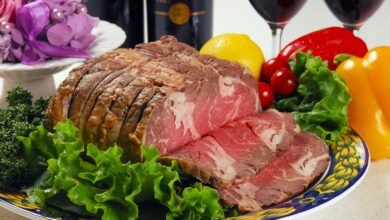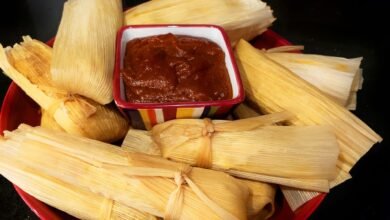How to Make Beef Tallow: A Simple DIY Guide
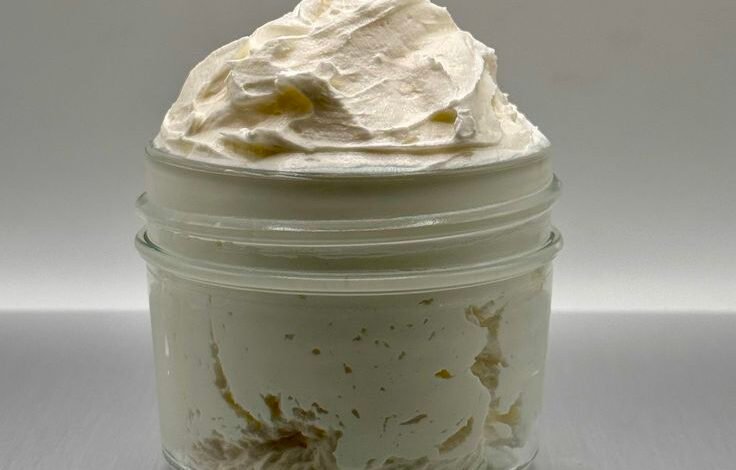
To make beef tallow, render beef fat by melting and straining it. Allow the fat to cool and solidify.
Beef tallow is a versatile and flavorful fat that has been used in cooking for centuries. Rendering beef fat into tallow is a simple process that involves melting the fat and then straining out any impurities. Once the fat has been rendered, it can be used for frying, roasting, and even making homemade skincare products.
In this blog post, we will explore the step-by-step process of making beef tallow, its benefits, and some creative ways to incorporate it into your cooking and daily life.
Introduction To Beef Tallow
Beef tallow is a versatile cooking fat that can be easily made at home. To make beef tallow, start by obtaining beef fat trimmings from your local butcher. Render the fat by slowly melting it and then straining the liquid to remove impurities, resulting in a pure and flavorful cooking fat.
Beef tallow is a rendered form of beef fat that is commonly used in cooking, especially in traditional cuisine. It is a versatile ingredient that can be used for frying, roasting, and baking. Beef tallow has been used for centuries and it is gaining popularity again due to the rising trend of traditional fats.
The Rising Popularity Of Traditional Fats
Traditional fats such as beef tallow have been used for centuries in many cultures, but they fell out of favor in the 20th century due to the rise of vegetable oils and margarine. However, in recent years, the trend of using traditional fats has been gaining popularity again due to the health benefits associated with them.
Benefits Of Beef Tallow
Beef tallow is a rich source of nutrients that are essential for good health. Here are some of the benefits of using beef tallow in your cooking:
- Rich in vitamins A, D, E, and K
- Contains conjugated linoleic acid (CLA), which has been linked to weight loss and improved heart health
- Has a high smoke point, making it ideal for high-temperature cooking
- Contains no trans fats or hydrogenated oils
In addition to these benefits, beef tallow also adds a delicious flavor to your food. It is a great alternative to vegetable oils and margarine, which are often highly processed and contain harmful additives. If you’re looking to incorporate traditional fats into your diet, beef tallow is a great place to start. It is easy to make at home and can be used in a variety of dishes. So why not give it a try and experience the many benefits of this traditional fat?
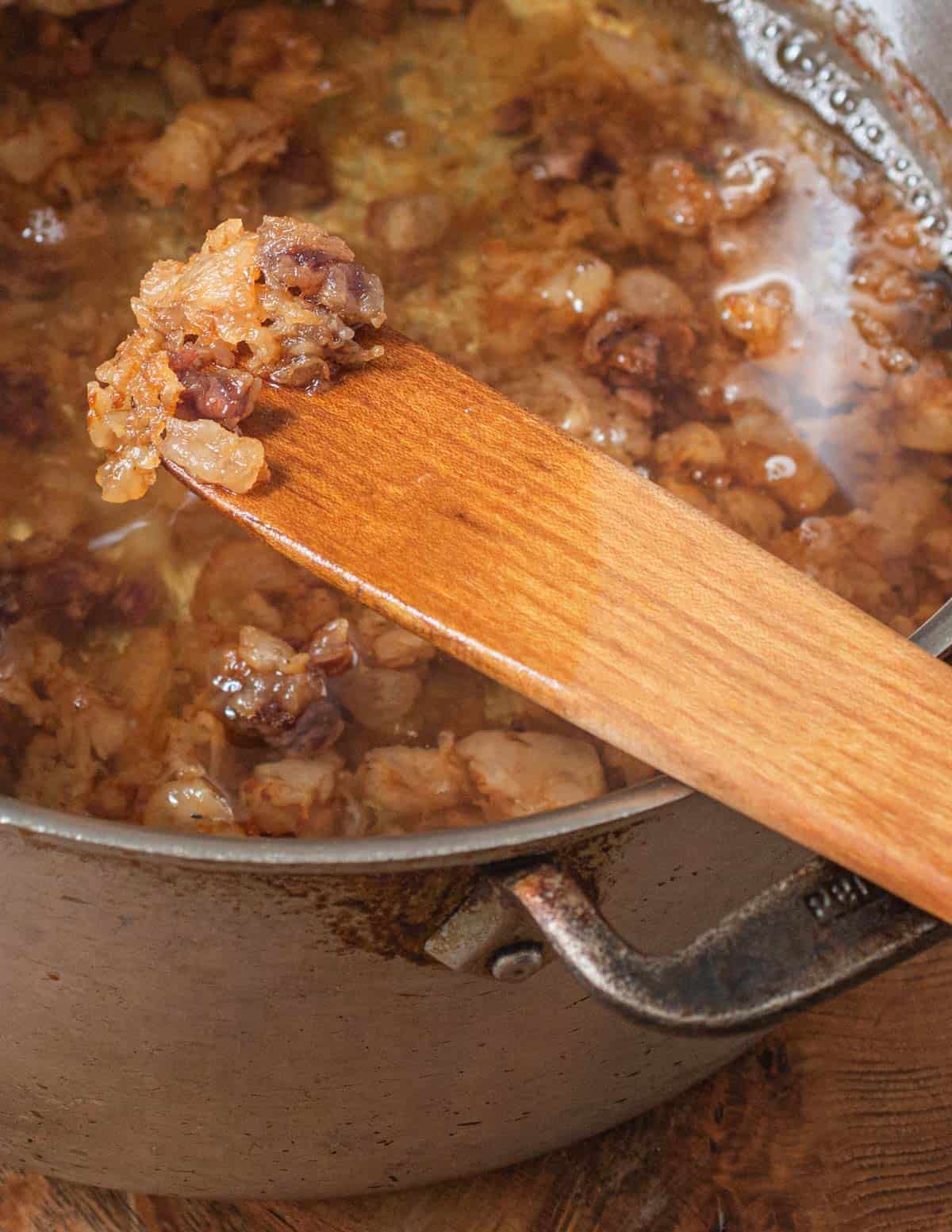
Credit: foragerchef.com
Essential Tools And Ingredients
Before you embark on the journey of making your own beef tallow, it’s important to gather all the essential tools and ingredients. By ensuring you have everything you need upfront, you can streamline the process and ensure the best results.
Choosing Quality Beef Fat
When it comes to making beef tallow, the first step is selecting the right beef fat. Look for high-quality fat that is fresh and free from any additives or preservatives. The best options are usually found from grass-fed cattle, as they tend to have a higher fat content and offer a richer flavor. Remember, the quality of the fat will directly impact the quality of your tallow, so choose wisely.
Kitchen Utensils Needed
To successfully make beef tallow, you will need a few kitchen utensils that are specifically designed to handle the process. Here are the essential tools you’ll need:
- A sharp knife: A sharp knife will make it easier to trim the fat from the beef.
- Cutting board: A sturdy cutting board will provide a stable surface for trimming and chopping the fat.
- Large pot or slow cooker: You’ll need a pot or slow cooker that is large enough to hold the fat and allow for easy stirring and melting.
- Strainer or cheesecloth: A strainer or cheesecloth is essential for separating the melted fat from any impurities.
- Storage containers: Once the tallow is ready, you’ll need airtight containers to store it properly.
By having these kitchen utensils on hand, you’ll be well-equipped to make your own beef tallow with ease.
Preparation Before Rendering
Before you start the process of rendering beef tallow, it’s important to ensure that you have everything you need and take the necessary precautions. The preparation stage involves cleaning and chopping the fat, as well as following safety tips to ensure a smooth and safe rendering process.
Cleaning And Chopping The Fat
Prior to rendering beef tallow, it’s crucial to clean and prepare the fat properly. Follow these steps:
- Start by obtaining high-quality beef fat. Look for fat that is fresh, preferably from grass-fed animals, as it will yield better flavor and quality tallow.
- Remove any meat remnants or impurities from the fat. These impurities can affect the taste and quality of the tallow.
- Chop the fat into small, uniform pieces. This will help speed up the rendering process and ensure even heat distribution.
By cleaning and chopping the fat beforehand, you’ll have a cleaner and more efficient rendering process, resulting in a higher-quality beef tallow.
Safety Tips
Rendering beef tallow involves working with heat and hot fats, so it’s important to prioritize safety. Follow these safety tips:
- Wear heat-resistant gloves to protect your hands from hot surfaces and potential splatters.
- Use a sturdy and heat-resistant container or pot for rendering the fat. Avoid using plastic or low-quality materials that may melt or break under high temperatures.
- Place the rendering pot on a stable surface away from flammable materials or anything that can catch fire.
- Keep a fire extinguisher nearby in case of any unexpected flames or accidents.
- Never leave the rendering process unattended. Stay vigilant and closely monitor the heat and fat to prevent overheating or burning.
By following these safety tips, you can ensure a safe and hassle-free beef tallow rendering experience.
The Rendering Process
The rendering process is a simple and effective way to extract beef tallow from fat. This process involves slowly heating the fat to melt it down, separating the liquid tallow from the solid residue. There are two popular methods for rendering beef tallow: the slow cooking method and the pressure cooking option. Let’s explore each method in more detail.
Slow Cooking Method
The slow cooking method is a traditional approach to rendering beef tallow. It involves gently heating the fat over low heat for an extended period. Here’s a step-by-step guide to follow:
- Start by obtaining beef fat from a trusted source.
- Cut the fat into small, uniform pieces for quicker rendering.
- Place the fat pieces in a large, heavy-bottomed pot.
- Set the stove to low heat and allow the fat to slowly melt.
- Stir occasionally to ensure even heating and prevent sticking.
- Continue cooking until the fat has completely melted and turned into a clear liquid.
- Once melted, strain the liquid through a fine-mesh sieve or cheesecloth to remove any impurities.
- Transfer the strained liquid into a clean jar or container for storage.
- Allow the tallow to cool and solidify before using or refrigerating it.
Pressure Cooking Option
If you’re looking for a faster method to render beef tallow, the pressure cooking option is a great choice. This method uses the power of pressure to accelerate the rendering process. Follow these steps for pressure cooking beef tallow:
- Obtain high-quality beef fat suitable for rendering.
- Cut the fat into small, manageable pieces.
- Place the fat in a pressure cooker.
- Add a small amount of water to prevent burning.
- Securely lock the pressure cooker lid.
- Set the pressure cooker to high pressure and bring it up to pressure.
- Once at pressure, reduce the heat to maintain pressure.
- Cook for approximately 60-90 minutes.
- Allow the pressure to naturally release before opening the cooker.
- Strain the liquid tallow through a fine-mesh sieve or cheesecloth.
- Transfer the strained tallow into a clean container for storage.
- Let the tallow cool and solidify before using or storing it.
Straining And Purifying
Making beef tallow involves a crucial step of straining and purifying the rendered fat to remove impurities and ensure clarity and purity. This process is essential to produce high-quality beef tallow that can be used for various culinary and non-culinary purposes.
Separating Impurities
After the beef fat has been rendered, it needs to be strained to remove any impurities. Place the rendered fat in a heat-resistant container and allow it to cool slightly. Next, line a fine-mesh strainer with cheesecloth and carefully pour the fat through the strainer into another container. This will help separate any solid impurities from the liquid fat.
Ensuring Clarity And Purity
To further ensure the clarity and purity of the beef tallow, the strained fat can be purified using a simple process. Heat the strained fat gently in a pot or saucepan over low heat. As the fat melts, any remaining impurities will settle to the bottom of the pot. Carefully ladle the clear liquid fat from the top, leaving the impurities behind.
Storing Your Beef Tallow
Once you’ve successfully made your beef tallow, it’s important to store it properly to maintain its quality and extend its shelf life. Proper storage will help keep your beef tallow fresh and ready for use in your favorite recipes. Here’s how to store your beef tallow:
Ideal Containers
Choosing the right containers for storing your beef tallow is crucial in preserving its quality. Ideally, opt for glass or stainless steel containers with airtight lids. These materials help prevent oxidation and protect the tallow from light exposure, which can cause it to spoil faster. Additionally, ensure the containers are clean and completely dry before storing the tallow to prevent contamination.
Shelf Life And Preservation
Beef tallow, when stored properly, can have a long shelf life. Typically, it can last for up to a year when stored in a cool, dark place. To further extend its shelf life, consider refrigerating or freezing the tallow. When refrigerated, beef tallow can last for several years, while freezing can preserve it for an indefinite period. It’s important to keep the tallow away from moisture and heat to prevent rancidity. Additionally, consider portioning the tallow into smaller containers, so you only expose what you need to air and light, preserving the rest for later use.
Uses Of Beef Tallow
Beef tallow is a versatile fat used for cooking, skincare, and soap making. To make beef tallow, start by obtaining beef fat trimmings and melting them down to extract the liquid fat. The resulting beef tallow can be used in a variety of ways, making it a valuable and multi-purpose product.
Beef tallow has versatile applications. It can be utilized in
In Cooking And Baking
as a flavorful and high-heat stable cooking fat. Beef tallow imparts rich taste to dishes and creates a delicious crust on meats. In addition, beef tallow can be used in
Skincare Applications
due to its moisturizing properties. It helps hydrate the skin and can be used in homemade skincare products like balms and salves.
In Cooking And Baking
Skincare Applications
Troubleshooting Common Issues
Discover how to troubleshoot common issues when making beef tallow with these simple and effective tips. From rendering techniques to proper storage, this guide will help you overcome any obstacles and achieve perfect results every time. Say goodbye to cooking mishaps and enjoy the benefits of homemade beef tallow in your culinary adventures.
Dealing With Odor
If your beef tallow has a strong odor, try adding 1 tsp of salt while rendering.
Texture Problems
To fix grainy tallow, reheat it gently and stir slowly to smoothen the texture.
Sustainable Practices
Sustainable practices are essential in every aspect of our lives, including our cooking methods. When it comes to making beef tallow, there are several sustainable approaches that can be incorporated to minimize waste and promote ethical sourcing.
Sourcing Ethically Raised Beef
Ethical sourcing is the foundation of sustainable beef tallow production. Choose grass-fed beef from local farms to support sustainable farming practices and ensure animal welfare.
Utilizing Leftover Materials
Minimize waste by utilizing leftover beef fat trimmings from other recipes to make tallow. This not only reduces food waste but also maximizes the use of the entire animal.
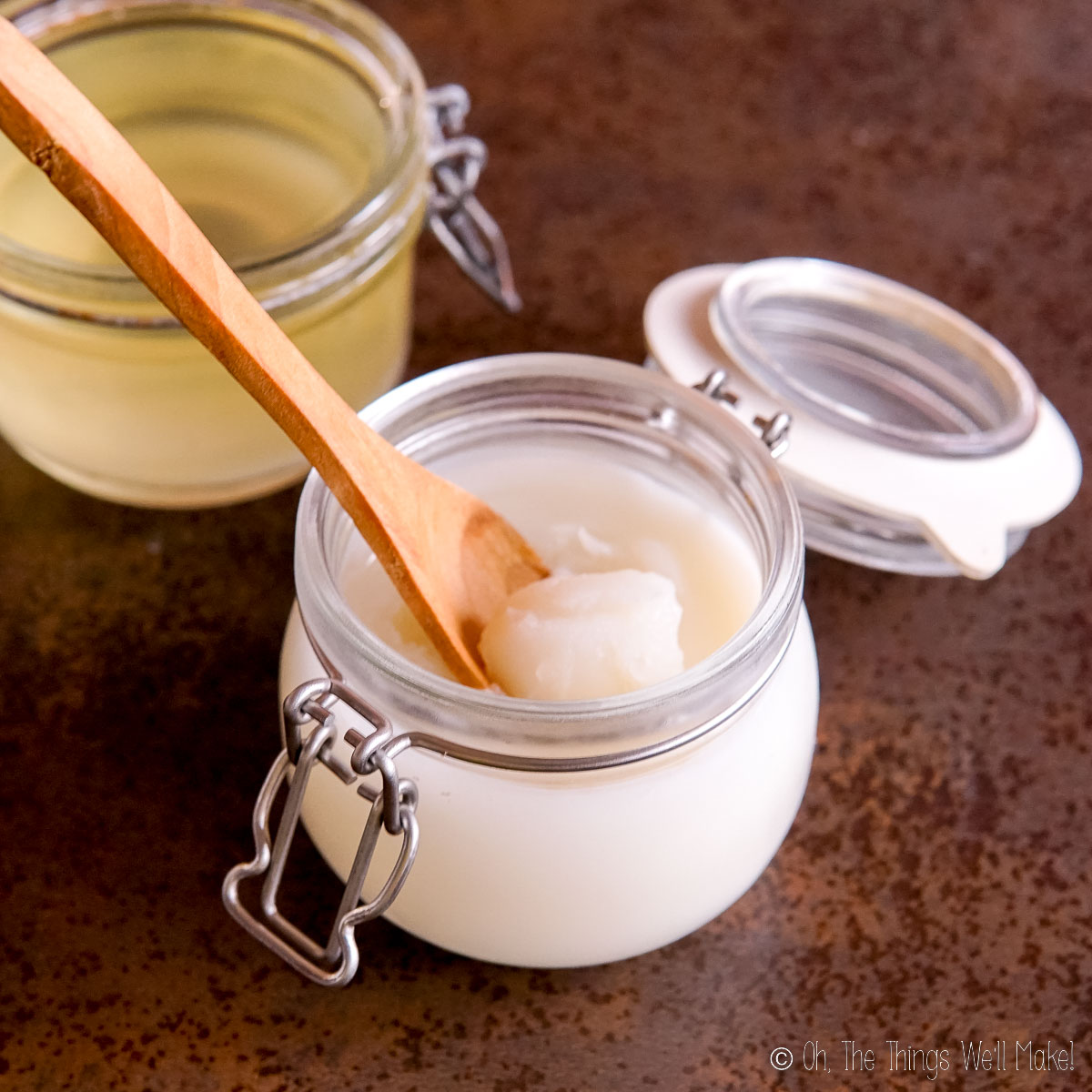
Credit: thethingswellmake.com
Beef Tallow Recipes
Discover the versatility of beef tallow with these easy and delicious beef tallow recipes. From crispy fries to nourishing balms, you can elevate your cooking and skincare routine with this traditional ingredient.
Classic Tallow Fries
Enjoy classic tallow fries by following these simple steps:
- Cut potatoes into strips.
- Soak in water, then pat dry.
- Heat tallow in a pan.
- Fry potatoes until golden brown.
- Season with salt and enjoy!
Homemade Tallow Balm
Nourish your skin with a homemade tallow balm using the following recipe:
- Melt tallow in a double boiler.
- Combine with essential oils.
- Pour into containers and let it solidify.
- Apply to dry skin for a natural moisturizer.

Credit: heygrillhey.com
Frequently Asked Questions
What Is Beef Tallow?
Beef tallow is a rendered form of beef fat, commonly used for cooking and soap making. It’s prized for its high smoke point and rich flavor, making it a versatile ingredient in various culinary applications.
How To Make Beef Tallow At Home?
To make beef tallow at home, start by obtaining beef fat trimmings from a butcher. Render the fat by slowly heating it to separate the oil. Once cooled and strained, store the liquid as beef tallow for use in cooking or skincare products.
What Are The Benefits Of Using Beef Tallow?
Beef tallow offers numerous benefits, including high heat stability, rich flavor, and a good source of healthy fats. It’s also free from artificial additives or trans fats, making it a wholesome and natural cooking fat.
Is Beef Tallow Suitable For All Cooking Methods?
Yes, beef tallow is suitable for various cooking methods, including frying, roasting, and sautéing. Its high smoke point and rich flavor make it an excellent choice for enhancing the taste and texture of a wide range of dishes.
Conclusion
Making beef tallow is a simple and cost-effective process that can be done in your own kitchen. It provides a healthier and more flavorful alternative to store-bought oils and can be used in a variety of cooking methods. By following the steps outlined in this guide, you can easily make your own beef tallow and enjoy its many benefits.
So why not give it a try and see for yourself the difference it can make in your cooking?
